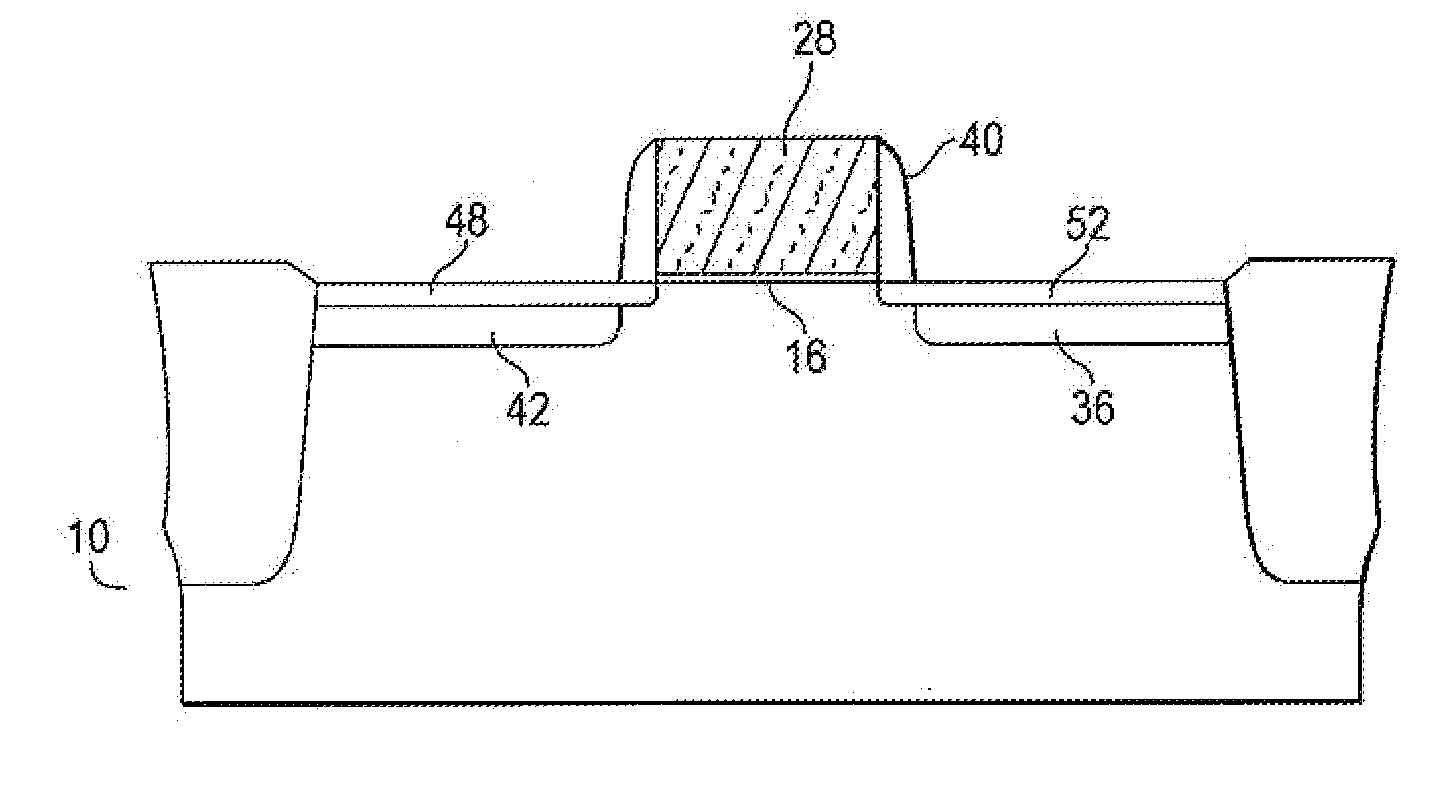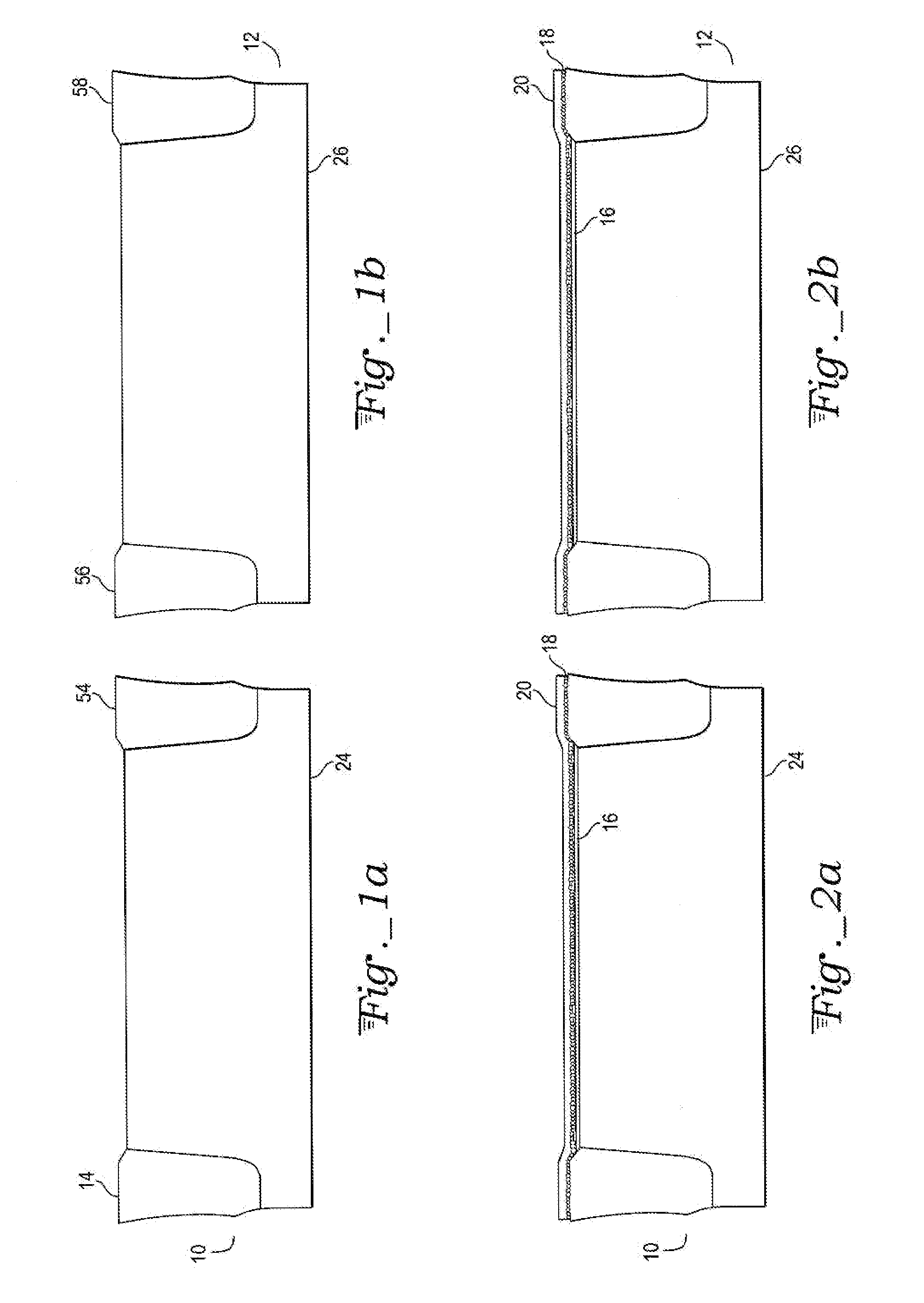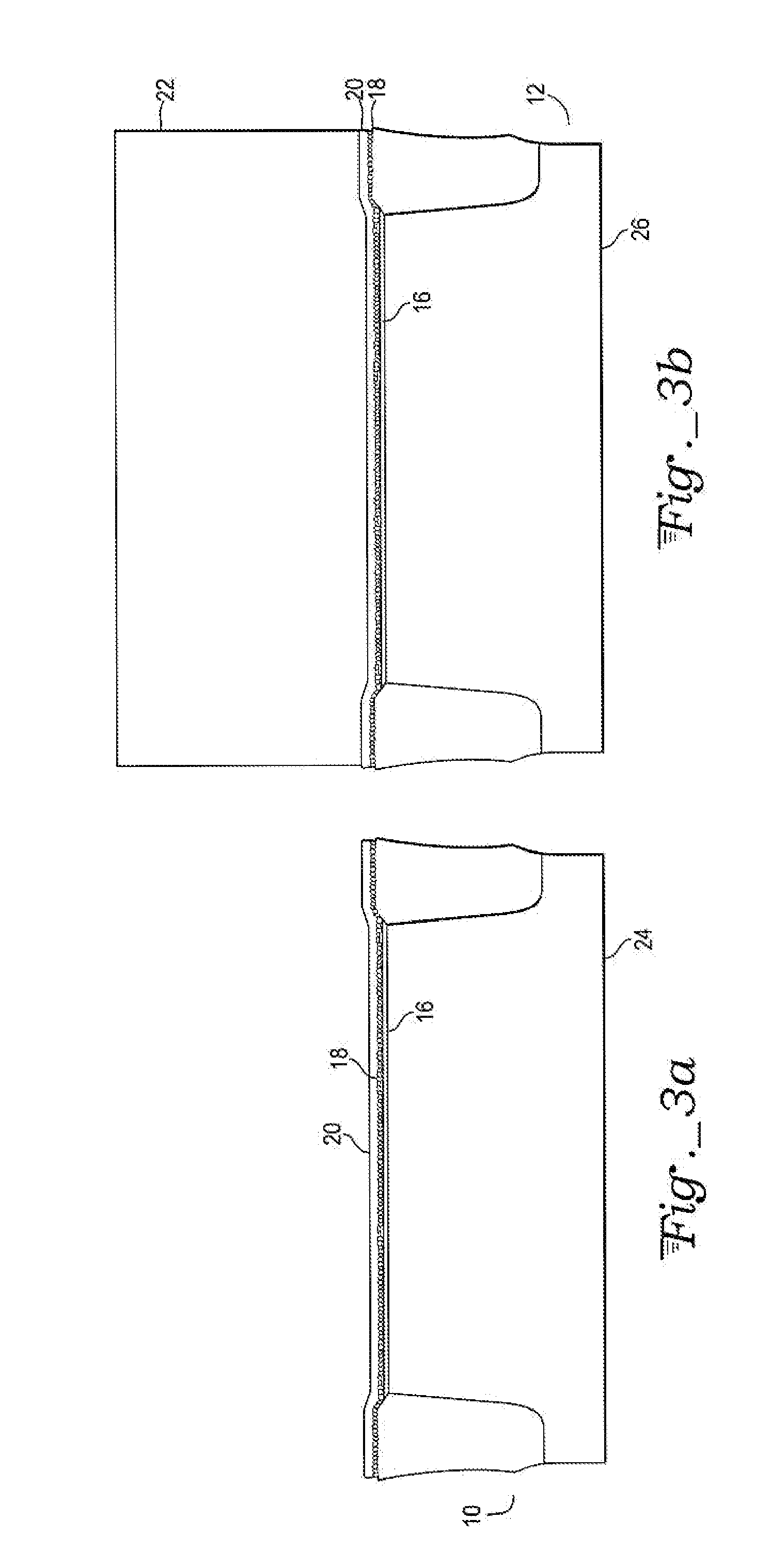Method for simultaneous fabrication of a nanocrystal and non-nanocrystal device
a nanocrystal and non-nanocrystal technology, applied in the direction of semiconductor devices, electrical equipment, nanotechnology, etc., can solve the problems of affecting the performance of the fabricated device, the nanocrystal device may be exceedingly small,
- Summary
- Abstract
- Description
- Claims
- Application Information
AI Technical Summary
Benefits of technology
Problems solved by technology
Method used
Image
Examples
Embodiment Construction
[0010] A process for simultaneously fabricating a semiconductor device, such as a memory cell, containing a nanocrystal layer as well as a peripheral semiconductor device (in one embodiment, forming CMOS transistor) that does not contain a nanocrystal layer is described below. With reference to FIGS. 1a-22a, exemplary process steps provide detail for fabrication of a peripheral device that does not contain nanocrystals while FIGS. 1b-22b provide detail for an exemplary fabrication of a memory cell containing nanocrystals.
[0011] In FIGS. 1a and 1b, a semiconductor substrate, for example p-type silicon, is provided. Assuming two semiconductor devices, a peripheral semiconductor device without nanocrystals (FIG. 1a) and a memory cell with nanocrystals (FIG. 1b) are, to be fabricated simultaneously on the substrate, both a portion 10 of the substrate 24 corresponding to the to-be fabricated peripheral device and a portion 12 of the substrates 26 corresponding to the memory cell with na...
PUM
 Login to View More
Login to View More Abstract
Description
Claims
Application Information
 Login to View More
Login to View More - R&D
- Intellectual Property
- Life Sciences
- Materials
- Tech Scout
- Unparalleled Data Quality
- Higher Quality Content
- 60% Fewer Hallucinations
Browse by: Latest US Patents, China's latest patents, Technical Efficacy Thesaurus, Application Domain, Technology Topic, Popular Technical Reports.
© 2025 PatSnap. All rights reserved.Legal|Privacy policy|Modern Slavery Act Transparency Statement|Sitemap|About US| Contact US: help@patsnap.com



